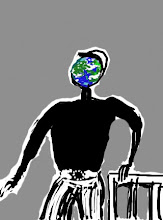Christ was veiled and shadowed in the Old, and exhibited in the New testament; promised in that, preached in this; there showed the Father in types, here manifested to us in truths; for the Tree of Life, the Ark of Noah, the Ladder of Jacob, the Mercy Seat, the Brazen Serpent and all such mystical types and typical figures that we read of in the Old Testament, what were they else but Christ, obscurely shadowed before he was fully revealed? And so all the men of note, Noah, Isaac, Joseph, Moses, Aaron, Joshua, Samson, David, Solomon ...Typology has its roots in Scripture, of course ('For as Jonah was three days and three nights in the belly of the great fish; so shall the Son of man be three days and three nights in the heart of the earth', Matthew 12:40). What particularly interests me, here, is the implication of this larger belief. It relates, of course, to notions of 'le dieu caché'; assuming we reject so-called 'natural theology' as overly simplistic, we have to wonder why God hides Himself in creation.
Thinking about Griffiths's by-no-means unusual perspective, I see a strange symmetry in the arrangement. God-as-Christ is hidden in the OT, but can be discovered if you're canny enough to decipher the clues; God-as-Christ is not hidden in the NT, for He is front-and-centre-stage for the whole of that book. But God in the larger sense is not hidden in the OT, in the sense (which I've discussed before on this blog) He is an actual character, an agent in the world as well as outside it; whilst in the NT, this situation changes -- for the NT is precisely the place where God disappears from plain view, forsakes the world.

No comments:
Post a Comment